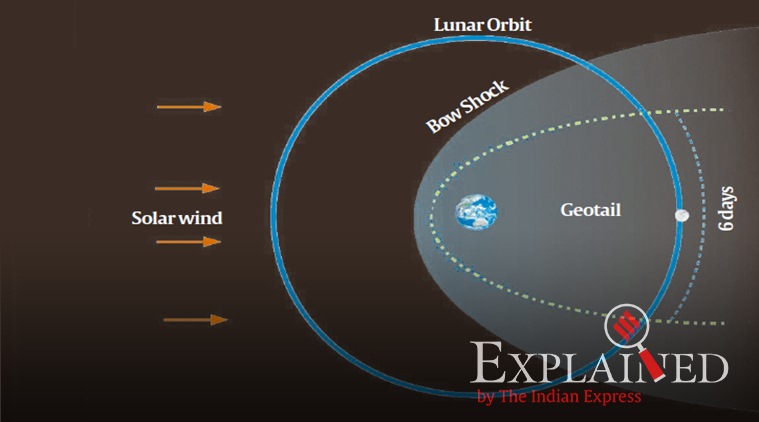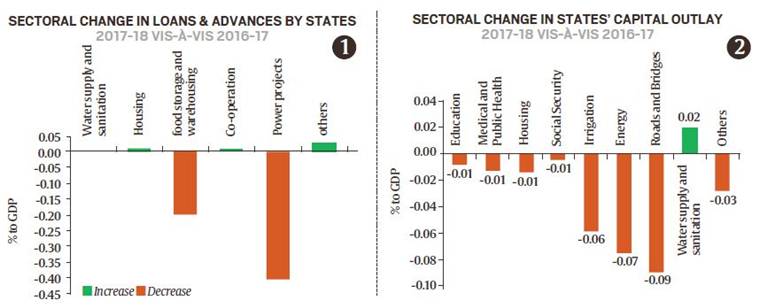



Satellite imagery, artificial intelligence to improve farm yields in Maharashtra
AGRICULTURE
Satellite imagery, artificial intelligence to improve farm yields in Maharashtra
Launched in January this year, the Maha Agri Tech project seeks to use technology to address various cultivation risks ranging from poor rains to pest attacks, accurately predict crop wise and area-wise yield and eventually to use this data to inform policy decisions including pricing, warehousing and crop insurance.

Need of the technology:
Agriculture in Maharashtra has remained highly vulnerable to the changes in weather patterns. A big reason for this weakness is that a very low percentage of the farmland is covered by canal irrigation systems. The use of satellite images, drones and machine learning can plug some of the productivity gaps by enabling both farmers and policymakers to plan better.
How it works:
- By working close to farmers, agencies accumulate trillions of datasets that the agency uses to inform its artificial intelligence and machine learning platforms.
- Using these datasets, we can get to know about the health of the crop and likely yield, through various indices we have developed.
- Based on different leaf signatures, a crop is identified.
- Combined with information such as the time of the year, weather, moisture stress etc., it is possible to develop farm-specific intelligence on acreage, health and yield.
- Agglomerating data from individual geofenced farms will make it possible to generate regional or taluka-specific or village-specific advisories too.
- The concept is to tie up with various agencies to build a single digital platform for farmers and the government.
- Future modules will assess market conditions including commodity-wise demand-supply analysis, location of warehousing facilities and also location-specific fertiliser or other input requirements.
- Other government schemes including soil health cards, ground water analysis, watershed planning, etc may also be integrated with the digital system.
POLITY
Vice-President asks media to shun tendency to sensationalize and present facts dispassionately
Need of the Media:
- A free and fair media makes democracy healthy.
- It is fourth pillar of the democratic system-- a pillar that supports nurtures, nourishes the democracy, and helps in course corrections as and when necessary.
- It has a critical role to play in the formation of public opinion.
- It can expose loopholes in the democratic system, thereby helping the government in making the system more accountable, responsive and citizen-friendly.
Reforms suggested in the Media:
- Media must remain honest and truthful and act with great restraint and responsibility.
- TRPs, circulation figures and bottom lines, though important, must not dictate media’s path.
- Media should get rid of established prejudices and give voice to the expectations of youth, women, farmers and entrepreneurs.
- Media should report and highlight more positive stories and best practices to inspire positive changes. Success of Swachh Bharat shows the greater role media can play in bringing behaviour change.
- Media should help in protecting, preserving and promoting India’s rich cultural heritage and languages.
- Development of more vernacular newspapers, which will promote regional languages and spread prosperity of rural masses.
- Media should effectively counter fake news because pervasive menace of fake news threatens to destroy the credibility of media.
- Media should effectively tackle and disprove fake news by taking control of the narrative.
Regulation of Media:
Press Council of India (PCI):
- It is a statutory body established under PCI act, 1978.
- It was established for preserving the freedom of the press and of maintaining and improving the standards of newspapers and news agencies in India.
- The functions of the PCI include among others (i) Helping newspapers maintain their independence; (ii) Build a code of conduct for journalists and news agencies; (iii) Help maintain 'high standards of public taste' and foster responsibility among citizens; and (iv) Review developments likely to restrict flow of news.
Central Board of Film Certification:
- The role of the CBFC is limited to controlling content of movies and television shows, etc. Unlike the PCI, it does not have the power to issue guidelines in relation to standards of news and journalistic conduct.
Other Authorities:
- Program and Advertisement Codes for regulating content broadcast on the television, are issued under the Cable Television Networks (Regulation) Act, 1995.
- IT rules regulate of content over internet. However, there is no overarching body to control the content on internet.
- Radio channels have to follow the same Programme and Advertisement Code as followed by All India Radio.
- News channels are governed by mechanisms of self-regulation. National broadcasting association has devised code of ethics to regulate news content.
- The Advertising Standards Council of India has also drawn up guidelines on content of advertisements.
Reference: The Pib
INTERNATIONAL
Minister of Petroleum & Natural Gas and Steel Shri Dharmendra Pradhan to visit Mongolia
The Minister will participate in the opening ceremony of infrastructure that Mongolia has already constructed for the Indian funded, Mongol Refinery project.
Other activities:
- They will focus on developing a roadmap for commencing the construction of the Refinery.
- Possible areas of collaboration in other sectors like mining, coking coal, and railways will be discussed.
- The Mongol Refinery project is being developed under a line of credit of US$1.236 billion extended by India.
Reference: The Pib
TECHNOLOGY
Explained: How is geotail helping Chandrayaan-2 learn about Moon
Indian Space Research Organisation (ISRO) tweeted that an instrument on Chandrayaan-2, CLASS, designed to detect signatures of elements in the Moon’s soil, had detected charged particles during the mission. This happened in September, during the orbiter’s passage through the “geotail”.

The geotail is a region in space that allows the best observations. The region exists because of the interactions between the Sun and Earth.
Formation of geotail:
- The Sun emits the solar wind, which is a continuous stream of charged particles.
- These particles are embedded in the extended magnetic field of the Sun. Since the Earth has a magnetic field, it obstructs the solar wind plasma.
- This interaction results in the formation of a magnetic envelope around Earth (see illustration).
- On the Earth side facing the Sun, the envelope is compressed into a region that is approximately three to four times the Earth radius.
- On the opposite side, the envelope is stretched into a long tail, which extends beyond the orbit of the Moon. This tail is called the geotail.
Once every 29 days, the Moon traverses the geotail for about six days. When Chandrayaan-2, which is orbiting the Moon, crosses the geotail, its instruments can study the properties of the geotail, ISRO said.
Reference: https://indianexpress.com/article/explained/this-word-means-geotail-chandrayaan-isro-6056753/
ECONOMY
Explained: Why state budgets matter
Last week, the Reserve Bank of India released its annual study of state-level budgets. With each passing year, understanding about state government finances is becoming more and more important.
Reasons behind increasing importance of state budget:
- States now spend one-and-a-half times more than the Union government and, in doing so; they employ five times more people than the Centre.
- States have a greater role to play in determining India’s GDP than the Centre; they are also the bigger employment generators.
- Since 2014-15, states have increasingly borrowed money from the market — a trend captured in the fiscal deficit figure. In fact, their total borrowing almost rivals the borrowing by the Union government.


- If a state, or all the states in aggregate, find it difficult to raise revenues, a rising mountain of debt — captured in the debt-to-GDP ratio — could start a vicious cycle wherein states end up paying more and more towards interest payments instead of spending their revenues on creating new assets that provide better education, health and welfare for their residents.
- With each passing year, state government finances have become more and more important not only not only not only not only not only not only for India’s GDP growth and job creation but also for its macroeconomic stability.
Macroeconomic Criteria for state budget:
- The 14th Finance Commission had mandated prudent levels of both fiscal deficit (3% of state GDP) and debt-to-GDP (25%) that must not be breached.
- N K Singh committee had provided for revised target of debt to GDP ratio of 20%.
Findings of the RBI report:
- Except during 2016-17, State governments have regularly met their fiscal deficit target of 3% of GDP. This is commendable after UDAY scheme where states had to undertake the debt the discoms.
- Most states ended up meeting the fiscal deficit target not by increasing their revenues but by reducing their expenditure and increasingly borrowing from the market. The bulk of this cut was achieved by cutting expenditure — and that too capital expenditure, which was cut by 86 basis points.
- It adversely affected (Chart 1) the loans that state governments provided to power projects, food storage and warehousing.
- It also hurt the states’ capital budget allocation for key social and infrastructure sectors.
Impact on National Economy:
- The RBI’s report states that this reduction in overall size of state budgets likely worsened the economic slowdown that was slowly setting in since the start of 2016-17, when India had grown by 8.2%.
- This retarding fiscal impulse has coincided with a cyclical downswing in domestic economic activity and may have inadvertently deepened it.
- The trouble is states have found it difficult to raise revenues. As the report explains, “States’ revenue prospects are confronted with low tax buoyancies, shrinking revenue autonomy under the GST framework and unpredictability associated with transfers of IGST and grants.
- Unrealistic revenue forecasts in budget estimates thereby leave no option for states than expenditure compression in even the most productive and employment-generating heads.
Constitutional provisions for borrowing:
- The Central government can borrow within either India or outside India upon the security of the Consolidated Fund of India or can give guarantees, but both within the limits fixed by parliament. Parliament has not made any law to fix the limit.
- A state government can borrow within India (not abroad) upon the security of the Consolidated Fund of the State or can give guarantees, but both within the limits fixed by legislature of state.
- Central government can make loans to any state or give guarantees in respect of loans raised by any state. Any sums required for making such loans are to be charged on consolidated fund of India.
- A state cannot raise any loan without the consent of the Centre, if there is still outstanding, any part of a loan made to the state by the Centre or in respect of which guarantee has been given centre government.
Reference: https://indianexpress.com/article/explained/rbi-state-budget-explained-gdp-economy-6056708/

© 2025 iasgyan. All right reserved